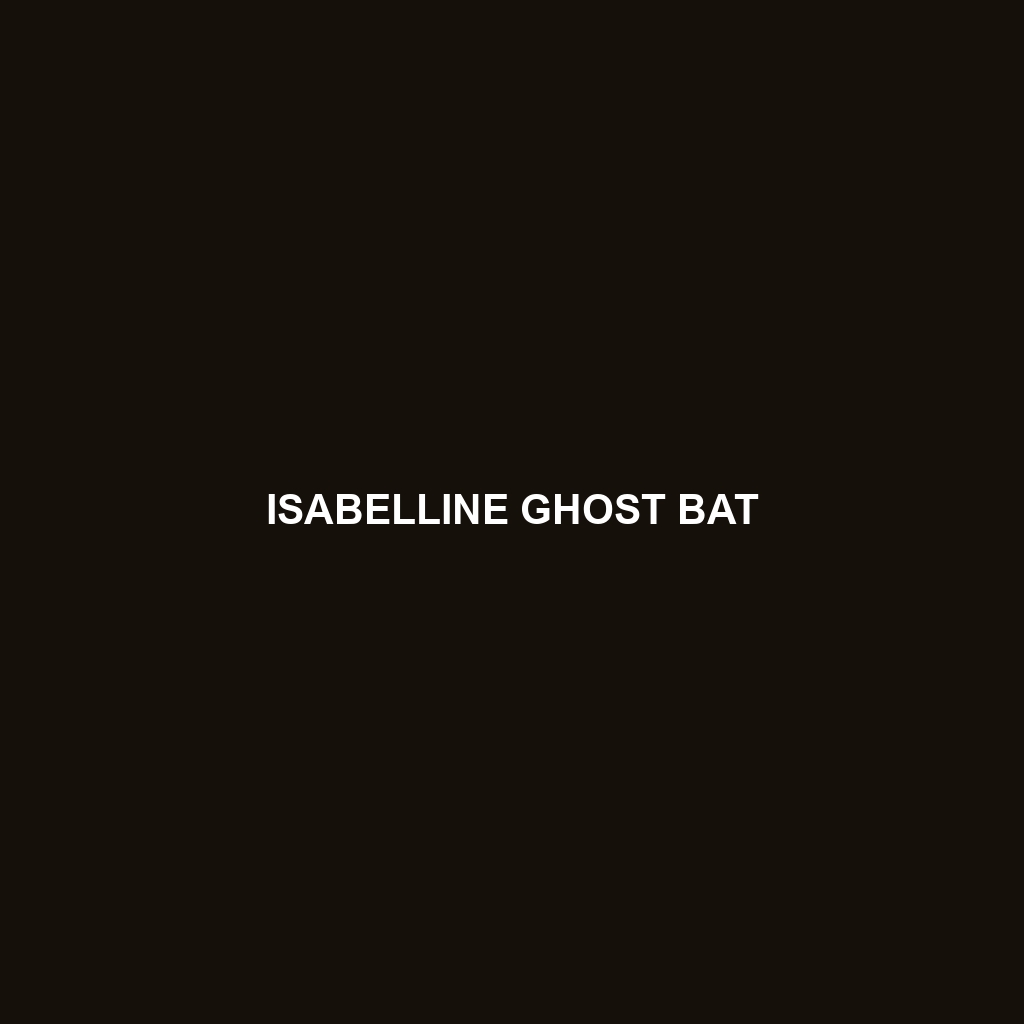Species Description of Greater Ghost Bat
Common Name: Greater Ghost Bat
Scientific Name: Macroderma gigas
Habitat:
The Greater Ghost Bat is primarily found in the arid regions of northern and central Australia, as well as in parts of Papua New Guinea. This species prefers habitats such as caves, hollow trees, and rocky outcrops, where they can roost in colonies. They are often located near water sources in dry forests, savannas, and open woodlands.
Physical Characteristics:
The Greater Ghost Bat is the largest bat species in Australia, with a wingspan that can reach up to 1.5 meters (approximately 4.9 feet). Adults typically weigh between 300 to 400 grams. Their fur is long and velvety, ranging from pale gray to nearly white, giving them their ghostly appearance. Distinctive features include a pointed snout, large ears, and long, serrated teeth designed for capturing prey.
Behavior:
The Greater Ghost Bat is nocturnal, primarily active at night when they hunt. They exhibit fascinating diving acrobatics when chasing prey, using echolocation to locate insects and small vertebrates. These bats are known for their social behavior, often roosting in large colonies, which can include hundreds of individuals. They are also known to be quite agile, making sudden turns in flight to catch prey in mid-air.
Diet:
This species has a carnivorous diet, primarily feeding on insects such as moths, beetles, and other flying arthropods. They are also known to hunt small vertebrates like frogs and small birds. Their feeding habits play a vital role in controlling insect populations, making them an essential part of their ecosystem.
Reproduction:
The Greater Ghost Bat breeds during the warmer months, typically from late spring to early summer. After a gestation period of around three months, a single pup is born, which is nursed and cared for by the mother. Young bats are capable of flying within a few weeks and begin to participate in foraging shortly thereafter. The bond between mothers and pups is strong, with maternal care being critical for the survival of the offspring.
Conservation Status:
The Greater Ghost Bat is currently listed as *potentially vulnerable* due to habitat loss and degradation, particularly from mining activities and deforestation. Conservation efforts are underway to ensure the survival of this unique species and its ecosystem. Protecting their roosting sites is essential for their conservation.
Interesting Facts:
One of the most fascinating facts about the Greater Ghost Bat is its role as a predator, as it uses echolocation to navigate and hunt in complete darkness. Additionally, they are capable of delivering a powerful bite due to their large teeth, which is quite rare among bats.
Role in Ecosystem:
The Greater Ghost Bat plays a crucial role in its ecosystem by controlling insect populations and influencing the food web dynamics. By feeding on a variety of prey, they help maintain ecological balance and contribute to the health of their habitats. Their presence is indicative of a healthy ecosystem, making their conservation vital for biodiversity.
